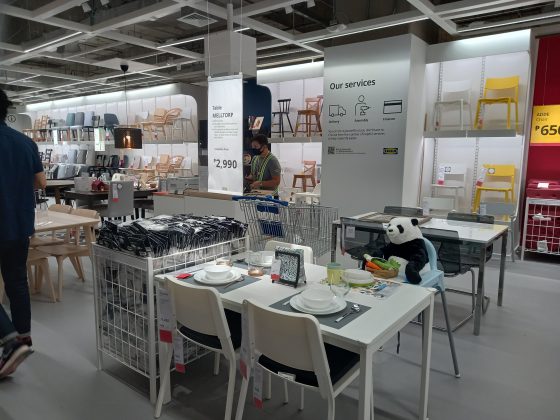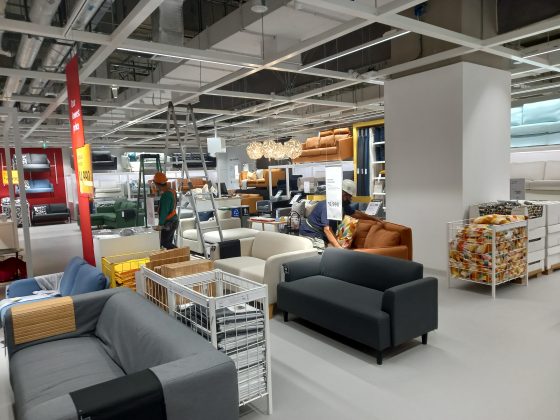After an eruption, a pandemic, and other issues: Ikea finally opens locally
#tdi_1 .td-doubleSlider-2 .td-item1 {
background: url(https://www.bworldonline.com/wp-content/uploads/2021/11/20211119_132102-scaled-e1637494916906-80×60.jpg) 0 0 no-repeat;
}
#tdi_1 .td-doubleSlider-2 .td-item2 {
background: url(https://www.bworldonline.com/wp-content/uploads/2021/11/20211119_142216-80×60.jpg) 0 0 no-repeat;
}
#tdi_1 .td-doubleSlider-2 .td-item3 {
background: url(https://www.bworldonline.com/wp-content/uploads/2021/11/20211119_140435-80×60.jpg) 0 0 no-repeat;
}
THE FIRST Ikea store in the Philippines is finally open, after rumors of its arrival in 2016, an announcement in 2018, and the events of 2020 and 2021 getting in its way.
Georg Platzer, Country Manager for Ikea in the Philippines, spoke about the delays during a group interview on the sidelines of a store tour last on Nov. 19. “Many reasons. Certainly, the pandemic is one of the reasons, because the supply chain of construction materials was impacted. We simply couldn’t get things from other countries imported to the Philippines,” said Mr. Platzer. These included the escalators and elevators that would help people go around the enormous store, the biggest Ikea so far in the world with about 68,000 sqm. This includes a showroom and market hall with a combined floor space of 15,000 sqm. Lockdowns imposed last year and this year also hampered construction, with about 3,000 workers stationed there then sent home due to lockdown work restrictions.
“We were also, I think, very optimistic in the beginning, because we did not have experience how it is to build something like this in a market like the Philippines. It was new to us, and we were super optimistic in the beginning. Now we know better. Some things in a country like the Philippines, being an archipelago, just take more time,” he said.
Adding to the delays were natural disasters, with Mr. Platzer counting among them the Taal volcano eruption in 2020. “What else? We got everything here. You don’t have these things in other countries in the world.”
Mr. Platzer also explained the size of the first Ikea store in the Philippines. Aside from the aforementioned 15,000 sqm. of space in the shopping floors, it also boasts 16,000 sqm. of space in the warehouse.
“It is so big, because it was driven by our logistics needs. Ikea has a promise we give to the customers, and it’s called instant gratification. Everybody who comes [who] sees something should be able to pick it and take it home on the same day,” he said. As such, the company has about seven- or eight-weeks’ worth of stock in their warehouse, determined by the seven-week lead time for something to be shipped from the central distribution warehouse in Shanghai. “For this reason, we needed a big warehouse which is like 16,000 sqm. on top here, and that’s basically one of the reasons why the building is so big.”
Some items, however, do come from the Philippines. There’s the restaurant (home of the famous Swedish meatballs), which has about 25 local suppliers for fish, dairy, meat, vegetables, and fruits. They also have a local supplier for live plants in Laguna. “We do not have any supplier yet for any furniture products,” he said, since a large percentage of their products are still made in Poland. China is also a lead manufacturer, with about 35% of their stock coming from that country, but they also source items from about 55 other countries.
Ikea also keeps its prices low. Mr. Platzer says, “We really try to be as low-priced as possible. That is mandatory by concept.
“We also have challenges with the Philippine import taxes, and some other costs which just comes along if you do business in the Philippines,” he said, counting electricity bills, for one. “In other countries, it’s something else.”
Of the 8,200 items in the store, the most expensive one BusinessWorld spotted was a desk that moved up and down, at about P30,000.
BusinessWorld took three hours to walk around two shopping floors, without stopping to buy anything, during the Nov. 19 preview tour. The first floor is dedicated to furniture showrooms, with several booths depicting possible rooms for a customer, each with a story (newlywed family, or a family with kids, for example). The kitchen section (one of more than 20 sections on the floor) boasted a working kitchen for customers to test (and for future demos to be held).
A second shopping floor, the Market Hall, carries accessories like rugs, glasses, and even toys.
In the interest of safety since the pandemic is ongoing, shopping is by appointment through www.ikea.com/ph/en/, with first slots available for the official opening day, Nov. 25 (some people have already booked their appointments). According to Mr. Platzer, they can accommodate, at full capacity, 8,000 people in the building, but due to concerns about the pandemic, they can only fill the building with up to 4,000 people (staff included: Mr. Platzer counts about 525 in-store employees).
“If anybody asks somebody a year from now if they know Ikea, I would like first that they say ‘yes,’ and that what they like about Ikea would be the low price and the quality.” — Joseph L. Garcia
For all the latest Business News Click Here
For the latest news and updates, follow us on Google News.


